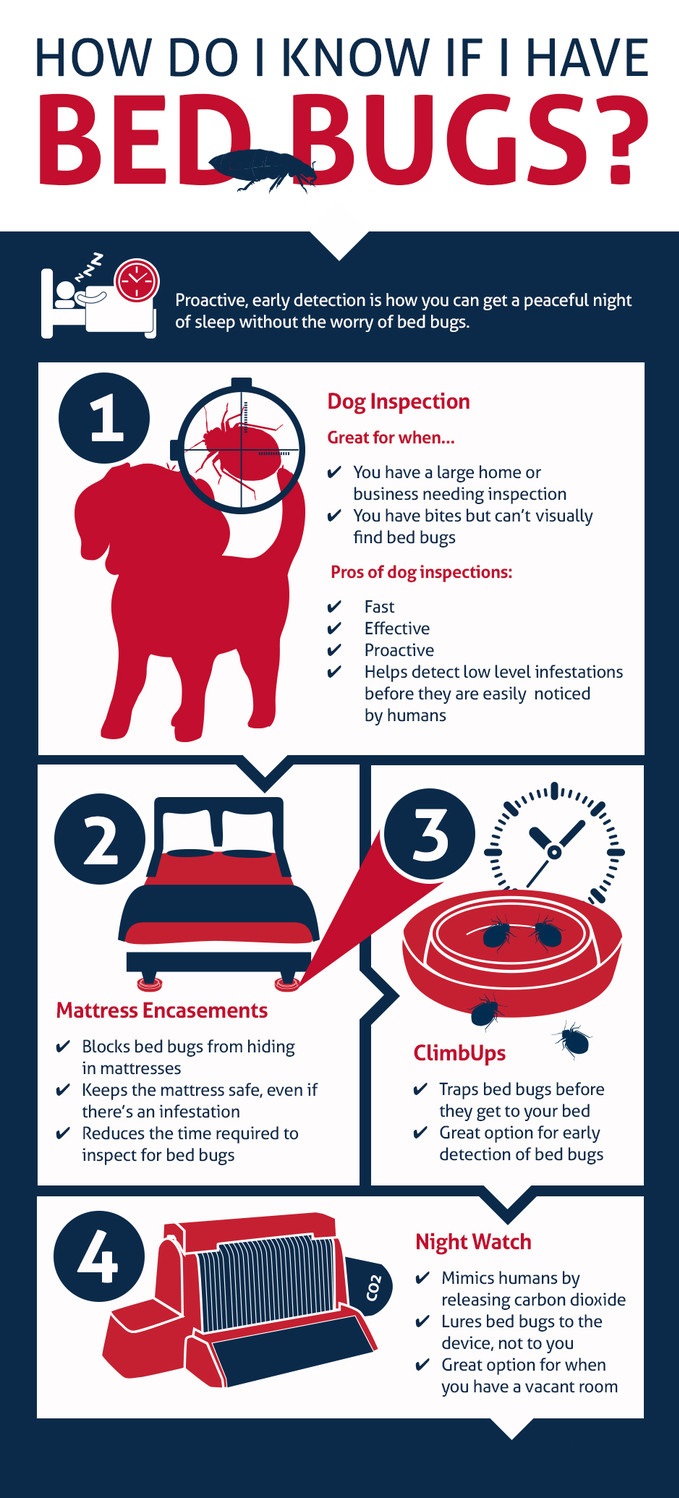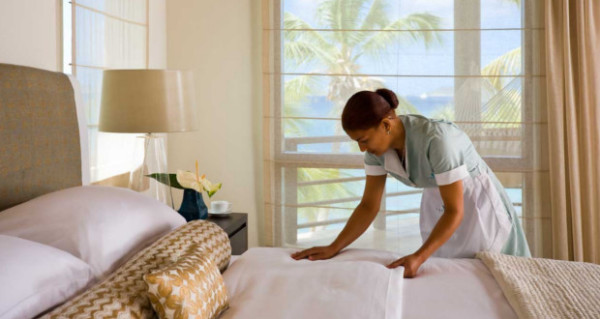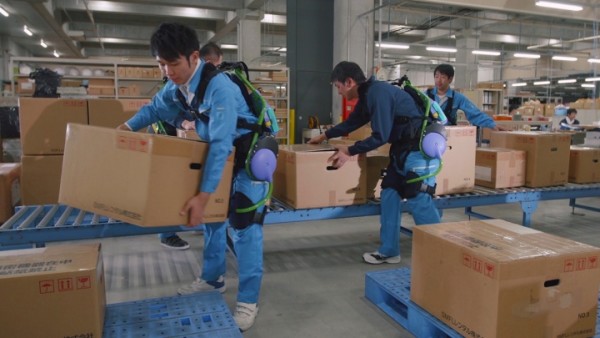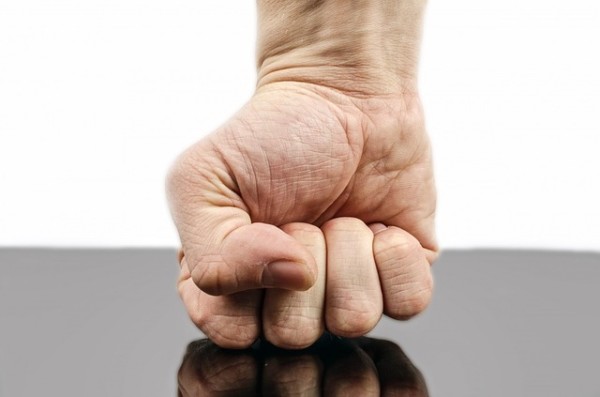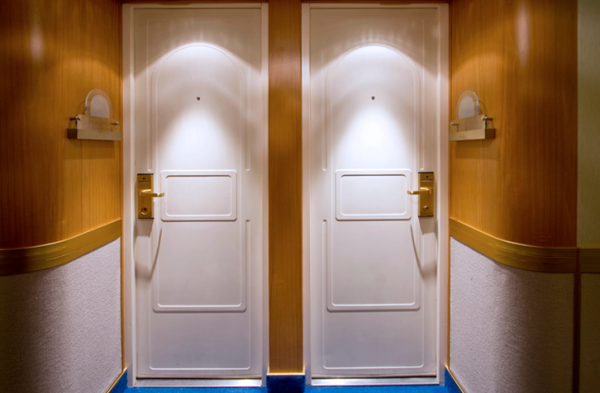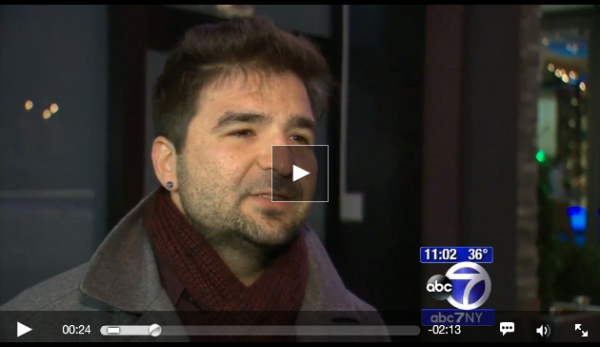Tag Archives: Hotel Staff
Infographic: How to Detect Bed Bugs
Comments Off on Infographic: How to Detect Bed Bugs
Filed under Bed Bugs, Guest Issues, Hotel Employees, Hotel Industry, Maintenance, Management And Ownership, Risk Management, Technology, Training
Reduce Workplace Injuries, Boost Productivity
High levels of customer satisfaction in the hospitality and leisure industries are critical to the success of any property. It is even more challenging to maintain customer satisfaction while reducing costs associated with employee injuries and the workers’ compensation claims. Employees are continually trained on the nuances of customer service skills and customer interactions in order to achieve the best levels of service. However, maintaining a high level of productivity is difficult when employees have been injured. Increasing injury rates result in higher workers’ compensation insurance, medical care, and claim costs.
Taking a look at the causes of work-related injuries, implementing standardized work practices, and making simple changes can yield a significant decrease in injury risk and an increase in productivity. A single property within a national hotel chain has been able to decrease its workers’ compensation costs by $500,000 in the first year while improving its customer satisfaction ratings.
Within the U.S. hospitality and leisure industry, food services and accommodations employees represent 12.9 million of the 15 million employees. In 2014, the recordable injury rate among these employees was 3.6 injuries per 100 full-time employees. These injury rates can be higher among employees in departments such as housekeeping and banquet operations. One study indicated that up to 95 percent of the housekeepers indicated they experienced severe to very severe physical pain.
Any effective ergonomics and process improvement program should include aspects such as management support, employee involvement, training, problem identification, early reporting of injury symptoms, evaluation of hazard controls, implementation of hazard controls, and evaluation of progress.
Effective administration and implementation of each aspect is important, but knowing which changes will bring the most improvement in productivity and injury reduction can make a big difference.
Let’s take a look at housekeeping: Their work ensures proper cleaning as well as maintaining the visual standards of the brand. Over the past decade, consumers’ expectations of luxury as it relates to hotel rooms have increased. Furnishings are more luxurious and often include thicker mattresses, plush duvets, decorative bed skirts, and the inclusion of a variety of pillows.
In an effort to reduce injury risk while maintaining or improving customer satisfaction within a housekeeping department, we reviewed common tasks and identified the tasks that were most likely to cause injury. A detailed study was conducted of these common housekeeping tasks, such as cleaning bathrooms, changing and making beds, and removing trash and soiled linen. The evaluations determined the extent of injury risk factors and opportunities to improve the quality of the services performed. After the analysis, recommendations were made related to the selection of appropriate tools, the modification of techniques for cleaning showers and bath tubs to decrease awkward postures and minimize forces, and the identification of methods to minimize awkward postures and forces while changing beds and handling trash and dirty linens. One key factor in the success of these changes was training the employees in the appropriate methods, injury risk factors, and the proper use of tools. The changes made within the housekeeping department decreased duvet-making time by 32 percent while maintaining a standard look; reduced the number of awkward shoulder postures by 72 percent; and reduced the number of awkward back postures by 45 percent. Guests indicated an improvement by a 5 percent increase in customer cleanliness ratings.
Another department that commonly experiences a high number of injuries is the banquet operations department. Within the banquets area, server and setup tasks were also evaluated. Following similar principles, tasks were identified that had previously caused injury or were difficult to perform. Evaluations were again conducted and recommendations were made. These recommendations involved working with vendors to identify the changes to carts that could make the most impact on decreasing push/pull forces while not decreasing the load on the carts. Additionally, standardized methods of room setup and table movement were established. These simple changes and employee training yielded a decrease in injury risk, improved employee morale, and increased efficiency.
Maintaining high levels of customer satisfaction while minimizing employee injuries and workers’ compensation costs in hospitality and leisure industry is critical to the success of any property. Evaluation of tasks by a qualified professional (such as a certified professional ergonomist) can ensure that risk factors are appropriately identified and that the recommendations will adequately reduce injury risk. Minimizing costs, reducing injuries, improving efficiency, and improving customer satisfaction ratings are benefits of a successful ergonomics and process improvement program.
For more: http://bit.ly/1SaVAye
Comments Off on Reduce Workplace Injuries, Boost Productivity
Filed under Claims, Employee Benefits, Employee Practices, Health, Hotel Employees, Hotel Industry, Injuries, Insurance, Management And Ownership, Risk Management, Training
New Robotic Exoskeleton Technology is Here From Panasonic
Mobility may be one of the most important elements in maintaining personal autonomy. And now, thanks to the incredible technology behind robotic exoskeletons, the elderly, the injured, and many others can experience mobility like never before. In a new video, Panasonic unveils its latest achievements in the robotics field, applying advanced control and sensor technologies to create a motor-equipped robot that will assist with human body mechanics.
Panasonic has developed a pair of suits — one meant primarily for industrial purposes, and another to help the disabled. The power assist suits will help users perform manual labor and potentially dangerous tasks in a range of worksites, and Hiromichi Fujimoto, president of Activelink Co. (one of Panasonic’s in-house venture companies) noted, “We are proposing robotics to help at these worksites, because there will always be a certain level of work that must be done by people, and these power assist suits can help reduce the physical strain during such work.”
To help with lifting and carrying heavy loads, Panasonic has introduced the AWN-03, an assist suit designed specifically to provide lower back support. By sensing the wearer’s motion when lifting or holding heavy objects, the suit sends a signal to its motors to jump into action. By raising the user’s upper body while simultaneously pushing on their thighs, the suit promises to reduce stress on the lower back by 15 kg.
There are also two additional suits that could be used in industrial settings — the PLN-01 (the “Ninja”) is meant to help the user’s motion while walking and running, whereas the Power Loader is heralded as a powerful suit perfect for use during disaster relief, construction, and public works.
On the other end of the spectrum, Panasonic has unveiled suits meant for the elderly. “As Japan has becomes an aging society, Panasonic is aspiring to make its contribution by supporting the elderly and their families lead a comfortable life full of smiling faces and laughter” explained Hitoshi Sasaki, assistant director of Sincere Kourien, an elderly care facility run by Panasonic Age-Free. “There are many instances that can be straining to both caregivers and care recipients. Just moving from the bed to a wheelchair can be a very energy consuming for both parties.”
For more: http://bit.ly/1UGTjAW
Comments Off on New Robotic Exoskeleton Technology is Here From Panasonic
Filed under Claims, Employee Practices, Health, Hotel Employees, Hotel Industry, Injuries, Management And Ownership, Risk Management, Technology, Workers' Compensation
Workplace Violence – How to Deal with a Disgruntled Ex-Employee
You are an executive working intently in your office when your assistant calls and informs you that a disgruntled ex-employee has shown up at the facility with a weapon and is threatening violence. Will you know what to do, or better yet, what not to do?
Workplace violence can be defined as any act that creates intimidating, hostile, and offensive or a threatening work environment through unwelcome words, actions or physical contact. As we have seen on multiple occasions, workplace violence and active shooter occurrences have been on a steady incline in this country. Are you and your company prepared?
There are two types of workplace violence that need to be taken into consideration. First is the external variety – criminal activity from a non-employee, client or customer. Second is the internal variety of a problem employee, employee personal relationship, hostile individual due to disciplinary actions or a facility closing. Be prepared by taking some very easy measures:
- Have a  written policy that is known throughout your organization
- Take the position of ‘no tolerance’ for this activity
- Train employees and provide ongoing training
- Make sure your plan protects first, then concentrates on compliance
- Understand and effectively communicate the legal implications
The potential deadly situations are reasonably foreseeable and this should be the standard used for compliance and determination of liability. Understand what data you need to assist in the prevention of workplace violence. You not only have a legal responsibility but the obligation to your workforce. Negligent hiring, high-risk terminations, retention, security, and poor training open you and your organization to the possibility of a workplace violence incident. Human resources plays a key role in your workplace violence plan through effective pre-employment screening, establishing discrete communications channels, an Employee Assistance Program and coordination with your security personnel regarding response plans.
Do not allow yourself to make these five critical mistakes:
- Denial and avoidance
- Not having a threat response plan
- Acting too hastily
- Lack of total workforce participation
- Insufficient assessment process
Coordinate a case assessment team and make sure they understand their purpose, make-up, objectives, and documentation measures. The need to recognize the behavioral warning signs that signal potential trouble and that evaluation of behavior is not ‘profiling’.
Protective measures include:
- A facility security audit
- Obtaining local crime statistics
- Recording a history of incidents
- Personnel training
- General security awareness training
- An established liaison with local law enforcement.
Remember, ignorance does not relieve an organization of responsibility. In summation, an organization has a Duty of Care responsibility to their employees and must plan, train, recognize, manage and respond to this growing problem within the business community.
For more:Â http://bit.ly/1XAJN02
Comments Off on Workplace Violence – How to Deal with a Disgruntled Ex-Employee
Filed under Crime, Hotel Employees, Hotel Industry, Labor Issues, Management And Ownership, Risk Management, Training
What the Erin Andrews Lawsuit Means for Hoteliers
A jury’s decision this week to award sportscaster Erin Andrews $55 million in a civil suit against her stalker and the owner and management company of the Nashville hotel in which the man secretly videotaped her will have repercussions for the hotel industry for years to come, sources said.
In 2008, Michael David Barrett recorded Andrews while she was nude through the peephole of her hotel guestroom at the Nashville Marriott at Vanderbilt University. Barrett, who later pleaded guilty to felony stalking in 2009, discovered which room was Andrews’ and reversed the peephole in the door to see inside. The jury in Andrews’ civil suit found Barrett, as well as the owner of the hotel, West End Hotel Partners, and the management company, Windsor Capital Group, to be responsible.
Andrews had originally included Marriott International in her original suit; however, the court in Tennessee found that Marriott had no liability in the case, and dismissed it.
Stephen Barth, a professor of hospitality law at the Conrad N. Hilton College of Hotel and Restaurant Management at the University of Houston and founder of hospitalitylawyer.com, testified on behalf of the defense during the civil trial. The defendants in this case did what they were supposed to do, Barth said in an interview with HNN, and he believes that because the companies were focused and diligent on their policies, procedures and employee training, it gave the jury members pause during their deliberations.
With the outcome of the case, Barth stressed that just as before, it’s important for hoteliers to have the right policies and procedures in place as well as the proper training for staff to deal with guest privacy issues.
“You need to be able to demonstrate the training that went on, the frequency and outcomes,†Barth said. “How do you evaluate whether the training was effective? Ultimately, you have to be able to demonstrate this in a courtroom.â€
Policies, procedures and training
David Samuels, partner at Michelman & Robinson, said one of the issues that jumped out at him in following the trial was whether the management company had the proper policies and procedures in place regarding guest privacy. He said he believes several jury members were bothered by the testimony of some hotel staff who couldn’t recall having those policies. Samuels followed the trial but was not directly involved in it.
At this point, all owners and operators should review how they’re running their properties and whether they have specific written policies and procedures in place.
“They need to have those and effectively train the staff on it,†Samuels said.
Along with having those policies in place, hoteliers should regularly update those policies based on legal developments, such as the Andrews case, according to Sylvia St. Clair, an associate with Faegre Baker Daniels. If there’s any question about whether a policy is in compliance with the law or industry standards, she said, contact legal counsel or the human resources department.
“Then ensure (that) new hires receive that training as well as existing employees,†she said.
If a front-desk associate receives a request for a guest’s private information, such as his or her guestroom number, St. Clair said the associate should know not to give that information out unless he or she is authorized to do so. The associate should know to contact his or her manager or supervisor with questions.
“You want a statement to give to (anyone) requesting information,†St. Clair said. “Make sure employees know if they are receiving these types of requests, and the person requesting is continually asking, they shouldn’t hesitate to get their manager or GM involved.â€
After completing the training, St. Clair said, document the training in employees’ files to show they received the latest version of the policy and understand it.
House phone access
During the civil trial, there was a dispute over how Andrews stalker learned which guest room was hers, Samuels said.
Andrews attorneys argued her stalker learned from the front-desk staff, an allegation the associates denied during the trial. Her stalker, Barrett, said in a taped deposition that he figured out Andrews room number by using an internal house phone at the hostess stand in the hotel restaurant.
“Those are only supposed to be used by employees,†Samuels said.
Barrett called the front desk and asked to speak with Andrews, Samuels said, and when the line was connected, Andrews room number appeared on the phone’s LCD screen. Barrett then went to her floor, saw the room next to hers was being turned over and then requested at the front desk to be in that room.
“From a privacy standpoint, from a safety standpoint, hotel guests should never be allowed to use an internal house phone that displays the room number on an LCD screen,†Samuels said.
If guests need a house phone, he said, they should be directed to one without an LCD screen and it should connect to an operator.
Similarly, hotel employees should be aware of who may be looking over their shoulders when using phones that display room numbers, he said.
Red flags
In the plaintiff’s closing argument, Andrews attorneys asked why the front-desk staff was not more critical about someone asking for a specific room, especially one next door to Andrews, according to Christian Stegmaier, a shareholder at Collins & Lacy. Stegmaier followed the case but was not directly involved in it.
That argument might presume too much about Andrews’ fame at the time, he said, as the front-desk associate may not have put two and two together.
“The takeaway from all of that is when you have a prospective guest making very specific requests, like about specific rooms, you need to be critical (of it),†he said.
Asking some gentle questions might allow the associate to learn a little more about the person making the request and why that specific room is so important to them, Stegmaier said.
“From a management perspective, you need to empower your associates to use that kind of critical thinking,†he said. “You want to encourage that.â€
That is doubly important when the front-desk staff is aware of any celebrities or dignitaries staying in the hotel, Samuels said. Any requests for a specific room adjacent to such guests should send up a “big, red flag,†he said.
For more:Â http://bit.ly/1VcP6UN
Comments Off on What the Erin Andrews Lawsuit Means for Hoteliers
Filed under Crime, Employee Practices, Guest Issues, Hotel Employees, Hotel Industry, Liability, Management And Ownership, Privacy, Risk Management, Training
Lawsuit Alert – Hotels Renting to Minors
CH&LA alerted its members last year that legal claims were being asserted against numerous lodging properties for refusing to rent to unaccompanied minors. The person at the center of most of those claims (Jonathan Asselin-Normand) is continuing his long-running campaign against California lodging properties raising such claims.
As CH&LA has repeatedly advised its members, both the California Unruh Civil Rights Act and the Fair Employment and Housing Act prohibit blanket policies denying accommodations to people solely because they are unaccompanied minors. The minimum damages for violating the Unruh Act is $4,000, plus attorney’s fees.
However, where a minor unaccompanied by an adult seeks accommodations, hotel staff may require a parent or guardian of the minor, or another responsible adult, to assume, in writing, full liability for any and all proper charges and other obligations incurred by the minor for accommodations, food and beverages, and other services provided by or through the innkeeper, as well as for any and all injuries or damage caused by the minor to any person or property. California Code 1865(d)(1).
What Members Should Do ASAP:
- Review your policies, and if you have a blanket policy against accommodating unaccompanied minors, change that policy to comply with the law.
- If your policy is on your web site or otherwise in your marketing materials, delete all reference to it.
- Make sure all staff members know that your hotel does not have a blanket prohibition against accepting unaccompanied minors. Be sure to constantly remind them of this fact.
- Check with your third-party booking entities to see what, if anything, they say about your hotel’s policies involving minors and children. Be sure that they comply with the law.
- Consider utilizing a written form with a responsible party acknowledging their liability for the minor. Please click here for a sample.
If you have questions about this, feel free to contact CH&LA’s Member Legal Advisor, Jim Abrams, at jim@calodging.com.
For more information:Â http://bit.ly/1QPre4h
Comments Off on Lawsuit Alert – Hotels Renting to Minors
Filed under Hotel Industry, Liability, Management And Ownership, Risk Management
Insurance Helps Protect Against Data Breach Fallout
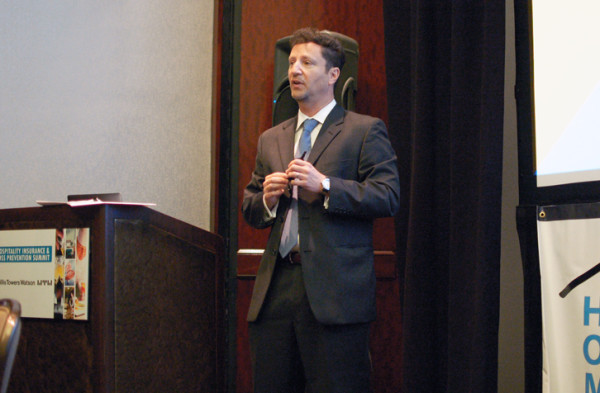
Joshua Gold of Anderson Kill speaks about the different types of insurance coverage to protect against data breaches at the Hospitality Law Conference. (Photo: Bryan Wroten)
The past year was a big year for data breaches in the hotel industry, and industry experts say there’s no sign of it stopping any time soon. That means hoteliers not only need to work on prevention, but they also need protection in case an attack does occur.
Panelists in the session “Nailing down responsive cyber coverage that responds to hospitality industry risks†at February’s Hospitality Law Conference told attendees that everything about the current digital age that makes it great, such as connectability and massive data storage, also makes it a risk.
Attempting to list all of the data breaches in the past 12 months would overwhelm the presentation screen, said Joshua Gold, a cyber-insurance attorney at Anderson Kill, and the problem continues to grow.
“It’s getting worse, not better,†he said.
- For more from the Hospitality Law Conference, read how hoteliers can prepare for the likely changes to overtime exemptions.
Insuring for different scenarios
Darin McMullen, an attorney at Anderson Kill, said there are four overlapping causes of data breaches at a company:
- Accidental internal, a common cause of breaches, occurs when an employee loses a device with company business data on it, and it might fall into someone else’s benign or malicious possession.
- Accidental external breaches occur through third-party vendors or subcontractors who have access to a company’s system or network. While they’re not trying to compromise their client’s security, they may cause harm through their own negligence.
- Intentional internal breaches happen when a disgruntled employee creates the breach. This can be a common problem in hospitality where turnover can be high. Employees don’t necessarily have to be high-level to access sensitive data.
- Intentional external breaches are the more traditional hacking events caused by criminal organizations or hacker activists, or hacktivists.
“Some you have control over; some you have virtually no control over,†McMullen said, who added that hoteliers should review their insurance options to protect against different risk exposures.
Gold said he’s working on an insurance claim for a client who had a former employee introduce malicious code into the company’s system. The code fried every controller, he said, causing physical damage to real pieces of hardware. For a networking company, this was a huge loss.
“The insurance company is saying electronic commands can’t cause real property damage,†he said. “It is covered under the literal language, but they don’t want to set that precedent. We will have to sue them.â€
When looking for different cyber-insurance policies, Gold said, it’s important to keep in mind all the potential scenarios as some have provisions that exclude what hoteliers might need and think would be included, such as the physical damage in his client’s case. He said hoteliers should work with a savvy broker who specializes in cyber-insurance packages. There are so many different primary forms out there, he said, which can change every three to four months based on what clients face.
For more:Â http://bit.ly/1TZLnue
Comments Off on Insurance Helps Protect Against Data Breach Fallout
Filed under Guest Issues, Hotel Industry, Insurance, Management And Ownership, Risk Management, Technology, Theft
What Should Your Hotel Brand Know About Generation Z?
Time waits for no man, and just as soon as we think we’re getting a handle on what millennials want, a new buzzword starts to crop up in conversation: “Generation Z.â€
Trying to define an entire generation’s attitude and purchasing habits can seem tedious (and a hard target to hit), but it makes smart business sense to have a plan in place for the next wave of travelers. While the inclination may be to think of Generation Z as merely an extension of millennials, odds are they will be their own distinct group. And how you prepare your destination, and brand, to receive this group could have a profound impact on your company’s future.
So, who is Generation Z?
Always Connected
Exact ranges for generations have been hard to define since the baby boomers, but Generation Z is roughly considered to be defined as those born in the mid- to late-1990s through the 2010s. In other words, babies being born today (and potentially up to around 2025), up to early 20-somethings.
This group makes up about 25 percent of the population, according to Forbes, making it more populous than boomers or millennials.
For some perspective, the oldest members of Generation Z were 7 or 8 years old when the Sept. 11 attacks took place. Many have pointed out significant aspects of this generation are its widespread use of the Internet (even from a very young age), a high comfort level with technology, reliance on social media for a large portion of their socializing, and possibly feelings of unsettlement and insecurity from growing up in the Great Recession.
And in less than five years, they will make up almost 10 percent of the workforce.
Not Millennials
The dividing line is a bit murky, but members of Generation Z are (and will likely continue to be) different than their millennial predecessors. According to a survey of young people conducted by Adecco, more members of Generation Z aspire to lofty career goals, while millennials crave financial stability.
Generation Z is more entrepreneurial, and more prefer in-person communication than millennials.
Already Influential
It may be several years before enough members of Generation Z are booking hotel rooms to be noticeable, but they already influence their parents—when polled, 93 percent of parents believe their children have influence over their family spending and purchases; 55 percent say their opinion is “extremely or very influential.â€
Planning Ahead
So if Generation Z’s tastes are already becoming an influence, what should your hotel do to get ready for the day when it’s their names on the credit card? Making sure your brand and marketing adjust accordingly will be of paramount importance.
In its report examining the trends of Generation Z, global firm Ernst & Young suggests three strategies to gaining the generation’s interest and loyalty in your brand: Intuitively deliver on their constantly evolving needs; make them part of the solution; and demonstrate respect and loyalty before asking for it.
Evolving Needs
For starters, members of Generation Z are in a constant search for information and new platforms of delivery—one in four try out at least seven new apps a month, and the list of social media platforms they favor could be longer than this article.
With that in mind, they have no patience for a brand that doesn’t already get it, or even worse, complicate their lives. Your messaging needs to find them wherever they may be searching—and that might be different than last week.
Part of the Solution
Generation Z also has more do-it-yourselfers than the previous generation (when you grow up with a how-to for anything on YouTube, it makes it easier). Ideally they want their brand to be a tool that empowers them—they may even want to create your offering for you, particularly where, when, and how they buy from you.
Respect and Loyalty
Once it’s earned, Generation Z’s brand loyalty is impressively strong. But getting it could be the challenge, and the best way to show that you respect them is to speak to them individually.
Whether this means personal interactions between customers and your brand on social media, or visibly accommodating what they’ve asked out of your brand, the last thing Generation Z wants is a form letter. Your brand will need to foster a reputation of responsiveness and collaboration to earn their respect.
“Gen Z is used to feasting on content regularly and this is the age group that has given rise to (multi-channel networks),†Matt Smith of the TV platform Anvanto told Digiday. “Brands like Marriott that are creating specialized content already are the ones that will resonate with them.â€
Through a combination of tech savviness and a greater need for self-reliance, Generation Z could shape up to be one of the most productive and influential generations our country has ever seen. Whether they choose to bring their business to your hotel will depend on how hard you work to get to know them. And you’d best not wait—there’ll be another generation on the horizon before we know it.
For more:Â http://bit.ly/1oVoqLF
Comments Off on What Should Your Hotel Brand Know About Generation Z?
Filed under Employee Practices, Guest Issues, Hotel Industry, Management And Ownership, Social Media, Technology
Couple From CA Describes Bedbugs ‘Nightmare’ at NYC Hotel
A couple from California thought they were on a dream vacation to New York City, but they found a massive bedbug infestation under the mattress at the Astor on the Park Hotel on the Upper West Side.
Now, they’re speaking out only to Eyewitness News.
The trip was a gift from Elgin Ozlen’s mother, and the couple was supposed to take in the sights and sounds of the city, and see the ball drop on New Year’s Eve in Times Square. However, because of the bedbugs, Ozlen says it will be a trip that he and his girlfriend will remember for all the wrong reasons.
“We were expecting a vacation to remember the rest of our lives, and we will definitely remember it for the rest of our lives, but it won’t be a pleasant memory,” says Ozlen.
After staying in a hotel room infested with bedbugs, the dream vacation immediately turned into a nightmare.
Ozlen says he shot video of the infestation, while staying at Astor on the Park on Central Park West. The couple arrived on Wednesday, and by Thursday, there was an infestation of bedbugs where Ozlen’s girlfriend slept. Ozlen then goes on to say that the room was the third room the couple had been in, after the first two did not have heaters.
The California man says they had planned to be in Times Square to see the ball drop, but that never happened. Also, on New Year’s Day, his birthday, they had tickets to see the Rockettes, but instead there was a change of plans.
“On my birthday, I’m in the hospital, and I’m washing the best clothes that I brought that I own for this vacation, and during that process many of the clothes became damaged, because they’re not meant to be dried,” Ozlen says.
It cost hundreds of dollars to have the couple’s belongings cleaned. Meanwhile Ozlen says his girlfriend’s body is still inflamed, saying she is furious that the bites and scratches may lead to permanent scarring.
He also says she can’t eat because she is nauseous, but she is not the only one.
“It’s disgusting. I don’t really feel like sleeping here,” said one hotel guest.
Katie Phillips, a tourist from Australia has been staying at Astor on the Park for a week, and says her stay has been ‘near perfect’ – a clean room with no complaints. After seeing the bedbugs video, she says it was ‘pretty disturbing’.
For more:Â http://abc13.co/21019nM
Comments Off on Couple From CA Describes Bedbugs ‘Nightmare’ at NYC Hotel
Filed under Bed Bugs, Guest Issues, Health, Hotel Industry, Maintenance, Management And Ownership, Risk Management
Spending Money Where the Guest Perceives It
When it comes to renovations, savvy owners are investing their money in design aspects that matter most to the guest. Nunzio DeSantis, executive vice president and director of HKS Hospitality Group, shares his perspective on where hotels can get the biggest bang for their buck.
Emphasize guest public spaces.
“The lobby has the opportunity to create an interesting and engaging space. We see every type of guest—business, leisure, group—enjoying and entering this space. Everyone must enter and check-in and everyone must exit and check out through this space. If you take a look at the lobby, it can also be an extension of the bar, coffee shop, or restaurant. The quality of seats and materials will bring business travelers down to conduct work and entice group visitors to congregate in this space.â€
Lighting is key.
“Look at how each room plays off of the other. How are the indoors and outdoors connected? What is the lighting like? Is it natural or synthetic lighting? The best way to make your guests happy they have chosen your hotel as their home away from home is a great view. Location and views change the entire experience.â€
Design a navigable guestroom.
“There are two functionalities we are finding more and more hotels could be benefiting from: Mobility within the room and creating a square room. Most rooms are entered from a corridor. The guest then enters their room by walking into yet another corridor, thus elongating the anticipation of the satisfaction of their room. What I suggest is to create a 22-by-22-square-foot room instead of the typical 15-by-32-square-foot room. You do this by pushing the closet, typically to your right, and the wet room, typically to your left, to the back of the room. You not only create more space within the room, you also have now made the wet room less or a confined closet and more of an enhanced experience with a window. You have also created space for mobility.â€
Create a clean bathroom space.
“The lavatory is what is going to set one brand apart from the rest. Customer service is always going to vary from brand to brand and is part of the interaction aspect of hotels, but everyone utilizes the lavatory, and everyone prefers it clean and functional. My suggestion is to get rid of the bathtub altogether and have a shower with a ledge. Really think about the guest—not everyone is the same height, so adjustability of the shower head is very important. Think about the firmness of the water, how it hits you, the temperature controls and what really should be the universal way to turn the shower on and off. And lastly, the drain should be slanted—this way everyone’s filth isn’t circling—and the doors should be an opaque glass. It’s clean, elegant, and private.â€
Craft an all-encompassing fitness experience.
“Fifteen to 20 years ago, fitness rooms had no windows and were a small room with a few pieces of equipment. Today, people want fitness with a view, great outdoor patios for a cool down, innovative lighting, larger open spaces to move around, and equipment that is functional.â€
Whenever DeSantis travels and stays in a new hotel, his architect side always emerges. As a guest, he constantly looks at what the properties are doing right or wrong, and whether things are working as intended. DeSantis says hotel design is all about making the right mistakes. “You try until it works, and when it does, you watch your guests’ experiences come to life.â€
For more:Â http://bit.ly/1SNBvU2
Comments Off on Spending Money Where the Guest Perceives It
Filed under Guest Issues, Hotel Industry, Maintenance, Management And Ownership

